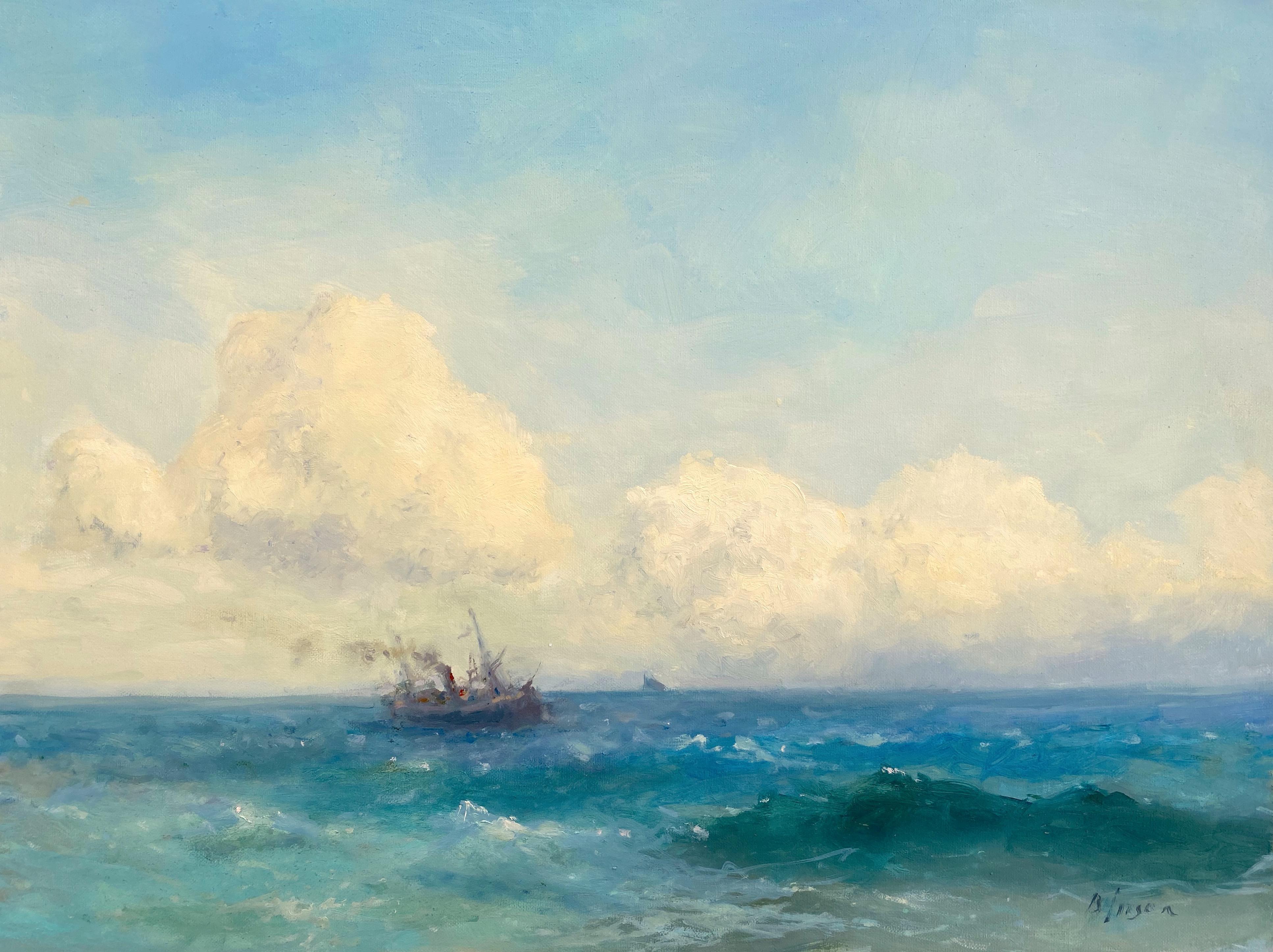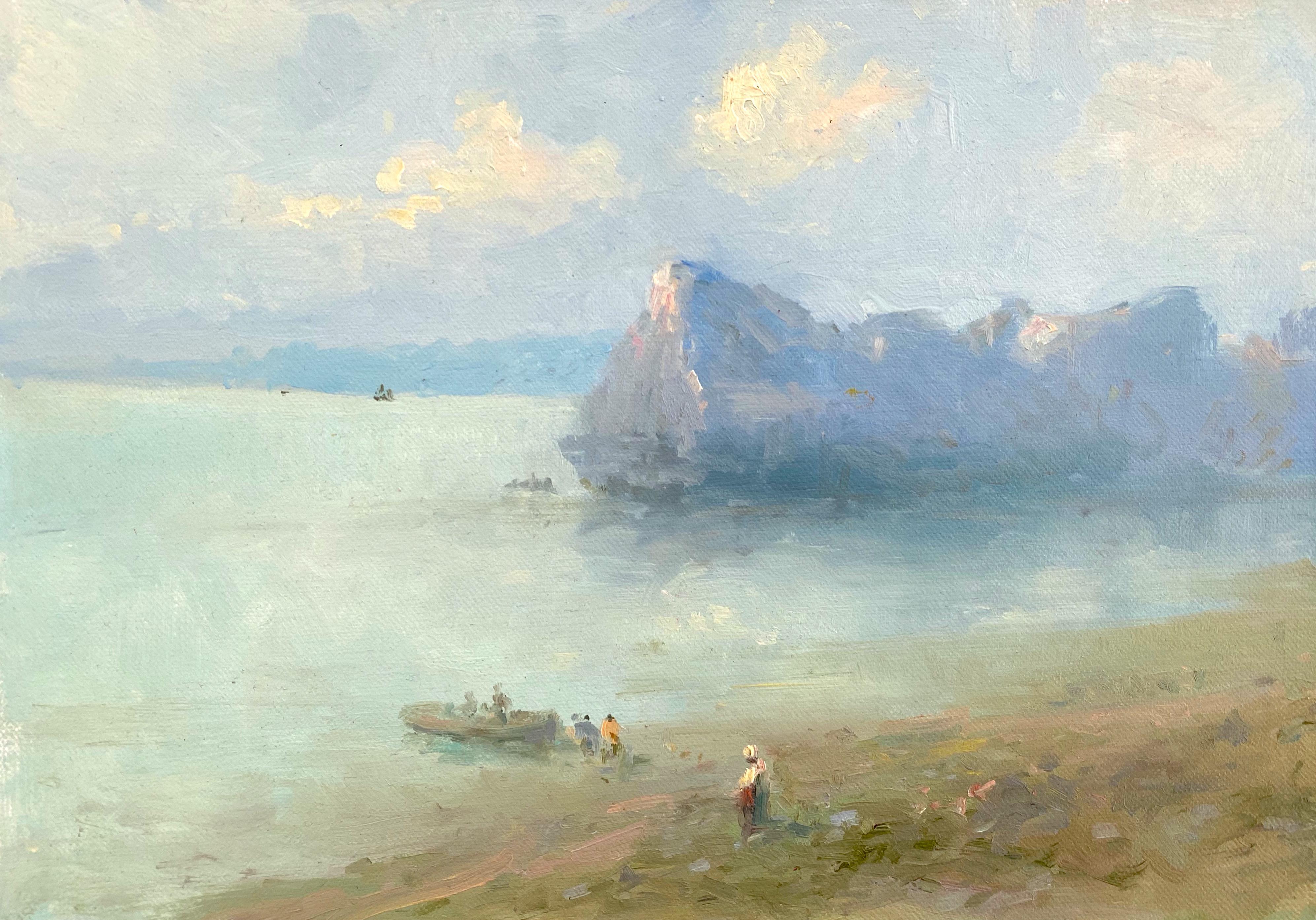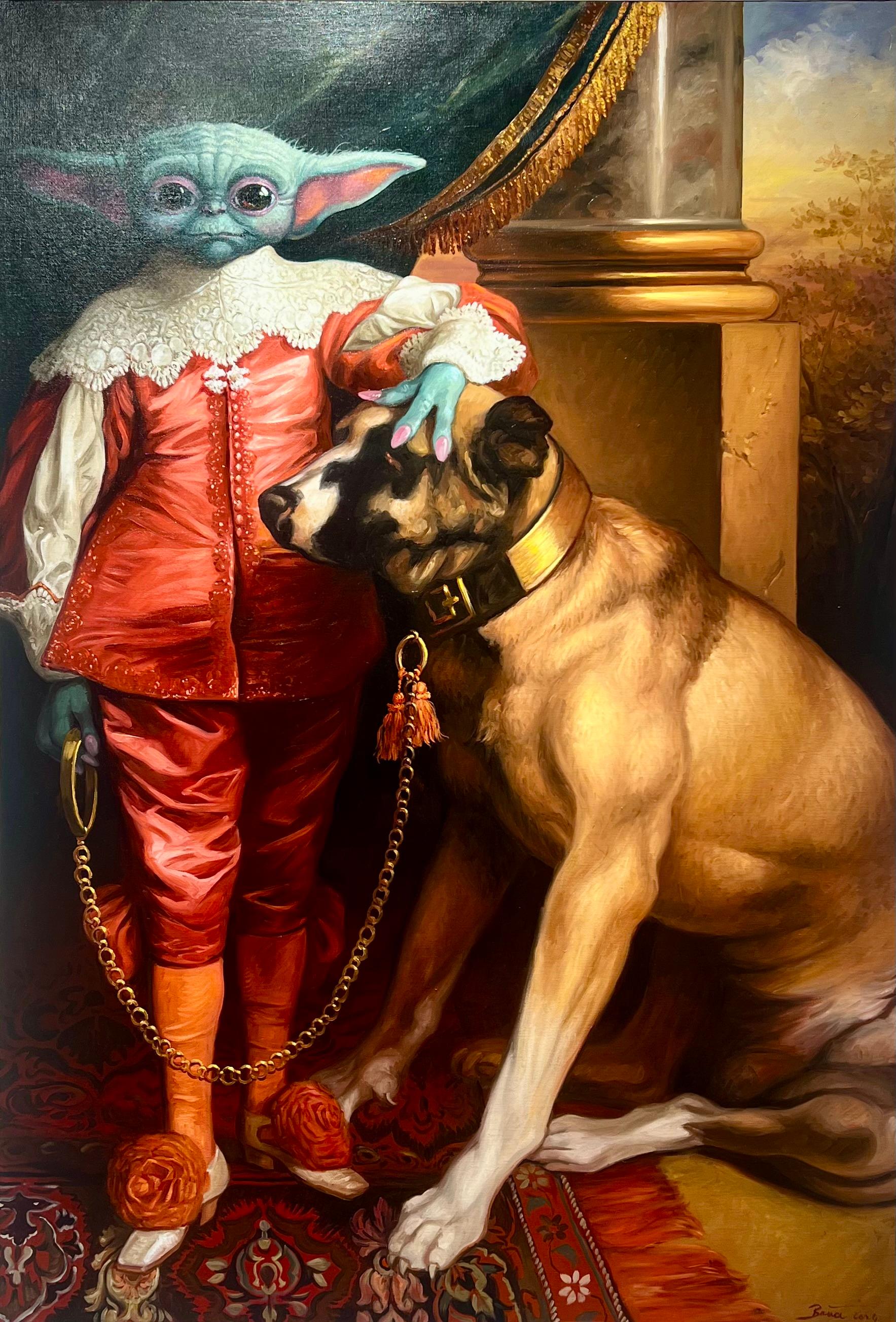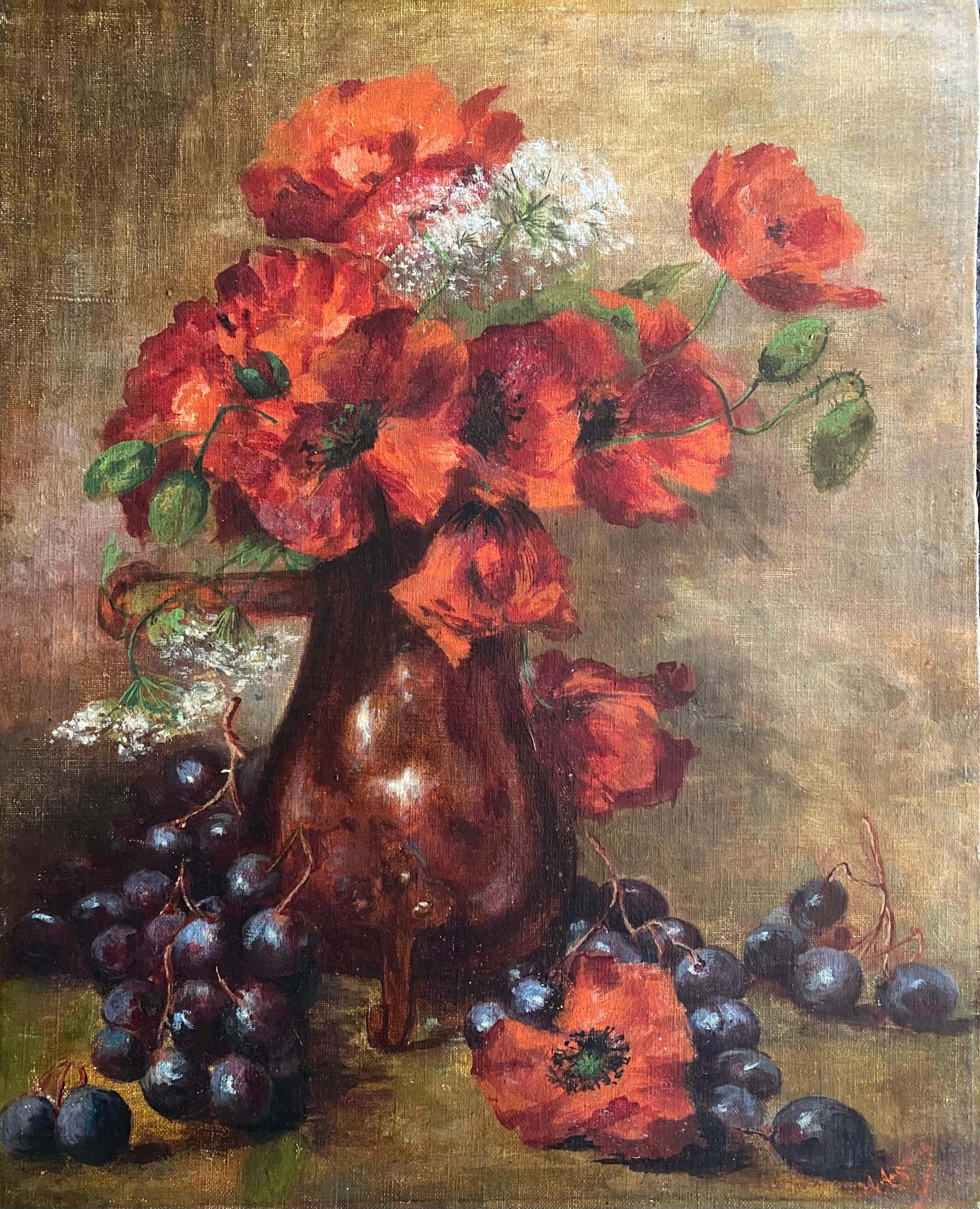Items Similar to Still Life, Flowers and Fruit
Video Loading
Want more images or videos?
Request additional images or videos from the seller
1 of 13
David de NoterStill Life, Flowers and Fruit c. 1860s
c. 1860s
About the Item
A stunning and dramatic still life by noted Belgian 19th century artist, David De Noter. Framed in a complimentary Empire style 22 karat hand carved frame. A lovely size and elegant work to hang in a dining room or entryway.
De Noter debuted at the Salon de Paris in 1853. During the 1860’s, de Noter lived and worked in Paris and was known to have shared a studio with J. Goupil in 1864 and at Le Vésinet in 1867. At some point during his career, he toured North Africa, in particular, Algeria.
- Creator:David de Noter (1825 - 1875, Belgian)
- Creation Year:c. 1860s
- Dimensions:Height: 40.75 in (103.51 cm)Width: 34.75 in (88.27 cm)Depth: 3.5 in (8.89 cm)
- Medium:
- Movement & Style:
- Period:
- Condition:Lovely condition. Canvas is relined to lay down some light cracks that are completely normal and not problematic to viewing the painting. High quality frame in good condition!
- Gallery Location:Greenwich, CT
- Reference Number:
About the Seller
5.0
Vetted Seller
These experienced sellers undergo a comprehensive evaluation by our team of in-house experts.
Established in 1857
1stDibs seller since 2020
34 sales on 1stDibs
Typical response time: 6 hours
- ShippingRetrieving quote...Ships From: Port Chester, NY
- Return PolicyA return for this item may be initiated within 14 days of delivery.
More From This SellerView All
- At the Market, FlowersLocated in Greenwich, CTA grand, elegant and Classic French still life of flowers! Can hold an entire room and long length of wall. Beautiful, opulent color tones so extra lighting is not necessary. Great presentation in the Empire style frame, 22 Karat. Undoubtedly Perrachon’s most ambitious canvas, it still has all of the qualities of his smaller rose paintings which gained him great recognition. As with any of the Lyon trained flower painters, Perrachon’s painting displays sound draughtsmanship, luminous colors and clever composition. This particular painting was exhibited at the Lyon Salon in 1898. Chez la Marchande de Fleurs presents a stunning array of blooms, among them roses and lilacs, set against a richly-textured ground. Perrachon creates a brilliant play of light against the baskets and pots of flowers, skillfully rendering highlight and shadow in order to create a sumptuous and beautiful composition. A flower and still life painter, André Perrachon was a student of Lepage at the Ecole des Beaux Arts of Lyon. Lyon produced an important and remarkable school of flower painters in the 19th century of which Perrachon is an excellent exponent. Perrachon debuted in the Paris salon in 1850 and won honorable mentions in both 1859 and 1863, continuing afterwards to exhibit regularly in the Paris and Lyon Salons. Perrachon was also a most popular art...Category
1890s Academic Paintings
MaterialsCanvas, Oil
- Grand Canal, VeniceBy Warren W. SheppardLocated in Greenwich, CTHighly respected American painter Warren Sheppard depicts the fishing boats of Venice with their colorful sails along the still waters of the Adriatic Sea. Sheppard is famous for his...Category
19th Century Academic Landscape Paintings
MaterialsOil, Canvas
- Jupiter and Mercury received by Philemon and BaucisLocated in Greenwich, CTCanvas size: 57 3/4 x 45 1/2 inches A striking and impressive French Academic painting in a high quality Italian style gold leaf frame. Gorguet was an Academic French artist who was trained by Boulanger, Gerome, Bonnat and Morot. His academic training was so strong that he was asked by the Opera House to illustrate many of their posters and he made his living illustrating many books of the time. In the market today this is most of what circulates and comes to light by the artist. He was ultimately made a professor of Drawings at L’Institut. However, Gorguet was also a Symbolist artist and did works aligned with the Art Nouveau movement. Many of these works are quite impressive but rarely have surfaced in the art market. Jupiter and Mercury Received by Philemon and Baucis is more of an Allegorical work and Gorguet switched gears to do a painting which would garner International attention at the important Concourse du Prix de Rome competition. 1891 was a year where the competition would be stiff and he knew he had to do an impressive painting with a compelling historical or allegorical content. In this painting, Gorguet is depicting their Jupiter and Mercury’s arrival at their home and the indication that Philemon and Baucis will share what they have with them despite their poverty-stricken means. The technical execution of this work is exceptional as the figurative work is done masterfully and any small detail within the canvas demonstrates tremendous attention of subtlety of tone and modeling. An example is the strand of cloth that crosses Jupiters chest and the delicate shades of pink and gray and how it is modeled. More than ever, the academic artists of this period are to be appreciated for the quality and creativeness of their work. And the timelessness of these classical allegories are still applicable to our lives today. So we predict a turn back toward work like this as qualitatively we know it will never be done again. Story of Jupiter and Mercury Visiting Philemon and Baucis (one interpretation) According to ancient Roman mythology and Ovid's Metamorphoses (8.631, 8.720.), Philemon and Baucis had lived out their long lives nobly, but in poverty. Jupiter, the Roman king of the gods, had heard of the virtuous couple, but based on all his previous experiences with humans, he had serious doubts as to their goodness. Jupiter was about to destroy mankind but was willing to give it one final chance before starting over again. So, in the company of his son Mercury, the wing-footed messenger god, Jupiter went about, disguised as a worn and weary traveler, from house to house among the neighbors of Philemon and Baucis. As Jupiter feared and expected, the neighbors turned him and Mercury away rudely. Then the two gods went to the last house...Category
1890s Academic Paintings
MaterialsCanvas, Oil
- Pair of Miner BookendsBy Max KalishLocated in Greenwich, CTMax Kalish was an important and highly collected American sculptor desired for his depictions of the working man. Here we see a miner taking a break. Kalish was adept at conveying ...Category
1920s Academic Figurative Sculptures
MaterialsBronze
- Sculpture of "A Rearing Bull" by animalier Antoine-Louis BaryeBy Antoine-Louis BaryeLocated in Greenwich, CTAntoine-Louis Barye was acclaimed as the finest sculptor of the French Animaliers School. As a 19th century sculptor he was an advocate for both naturalism and romanticism. This rear...Category
19th Century Academic Still-life Sculptures
MaterialsBronze
- Roses in a Copper BowlBy Soren Emil CarlsenLocated in Greenwich, CTThis elegant and rare still life of red roses is by one of America's finest still life artists. It is framed in a fine Empire style 24 karat gilded and carved frame. Roses in a Copper Bowl represents the pinnacle of still life painting as Carlsen has described it above. Before painting marine landscapes, Carlsen was first known as one of the finest still-life painters of his era. Painted in 1893 during Carlsen’s period in New York, this canvas also draws comparisons to the work of John LaFarge, John White Alexander...Category
1890s American Realist Still-life Paintings
MaterialsOil, Canvas
You May Also Like
- “The Harem Girl”By Konrad FilipLocated in Southampton, NYHere for your consideration is an intriguing portrait of a young harem girl in costume by the German artist, Konrad Filip. Signed by the artist top right, Munich. Condition is very ...Category
Early 1900s Academic Figurative Paintings
MaterialsCanvas, Oil
- Le Martyr de Saint Sebastian (Academic Figurative Oil Painting in Gold Frame)By Mark BeardLocated in Hudson, NYAcademic style figurative oil painting on canvas 48 x 24 inches unframed 58 x 32 x 3 inches in gold leaf wood frame This vertical, contemporary figurative painting of Le Martyr de Saint Sebastian was made by Mark Beard under his fictitious artistic persona, Hippolyte-Alexandre Michallon. Painted in a modern Academic style, Beard paints this Christian saint with dramatic detail and emotional gravity. The scene is a common artistic depiction of Sebastian who according to traditional belief, was killed during the Roman emperor Diocletian's persecution of the Christians. Here the artist depicts a nearly nude Saint Sebastian standing stoically while tied to a rustic brown post. A lush green forested terrain decorates the background while a white neo-classical building sits in the distance, which is perhaps the tomb where Saint Sebastian's remains were laid to rest. Saint Sebastian's pale blue-grey, stone-like stone tone is characteristic of Mark Beard's work who often portrays muscular young men similarly to Greek statues. The vertical Academic style figurative oil painting is complimented with a vintage style gold leaf wood frame. The painting is signed 'H. A. Michallon 1872' in red oil paint in the lower right corner. The gold frame is also signed and inscribed with black oil paint in several places (please see images). Mark Beard is a contemporary artist who made this work under the pseudonym Hippolyte A. Michallon who painted during the late 1800's so slight wear (see images) is intentionally staged to align with the factitious artist's purposed history. About the artist: Mark Beard is perhaps the most literal example of an artist pulled in so many different directions that he chose to “invent” six different personae in which to channel his overflowing energy and need for expression. Each painting style is radically different from the next, so it remains entirely believable that the work could stem from six completely different people of different time periods and different schools of thought. With a background in set design, Beard has always been one who could conjure total magic with anything available. Mark Beard has exhibited with Carrie Haddad Gallery for nearly twenty years and there has never been a dull moment. Mark Beard, born in 1956 in Salt Lake city, now lives in New York City. His works are in museum collections worldwide, including the Metropolitan Museum of Art, New York City; the Museum of Modern Art, New York City; the Whitney Museum of American Art, New York City; the Boston Museum of Fine Arts; and the Harvard, Yale, and Princeton University Art Museums; among many others. We would not be the least bit surprised to see new ‘personas’ emerge in the coming years. About: Hippolyte - Alexandre Michallon, 1849 -1930 The long and peripatetic artistic career of Hippolyte-Alexandre Michallon began in a conventional fashion. The only son of prosperous bourgeois parents in Tours, he first studied drawing with his mother, an accomplished amateur painter of insects. His father, an undertaker who appreciated his son's talent and supported his ambition to become a painter, sent him to Paris at age sixteen to enroll in the studio of Francois-Edouard Picot (1786-1868), an eminent history painter and professor at the Ecole des Beaux-Arts, with whom he studied for three years, until Picot's death. Under his aging teacher's guidance and tutelage, Michallon entered the preliminary stages of the Prix de Rome contest at the Ecole three times, winning an Honorable Mention in 1869 for his composition entitled The Solider of the Marathon. For the next twenty years Michallon regualarly exhibited paintings on historical and biblical themes at the Paris Salon, as well as commissioned portraits. By his own account, the most ambitious work of Michallon's career was a thirty-foot canvas depicting Noah's Ark, which he exhibited in the Salon in 1875. Michallon began painting atmospheric but zoologically correct images of exotic animals in the wild. These achieved a certain popularity among French and foreign collectors alike, providing Michallon with financial security for the first time in his career. Michallon moved to England in 1893. His outstanding technical skills easily earned him a position on the faculty of the Slade School of Art in 1900. The craze for animal paintings proved short-lived. He continued to teach at Slade for the next two decades, but his classes gradually dwindled in size as the academic approach and methods he espoused went from outmoded to downright unpopular. Finally in 1922, finding himself reduced to a single pupil, the talented young American Bruce Sargeant, he retired from Slade, persuading Sargeant to leave with him and undergo private instruction at home. Several years later he retired to a cottage at St. Ives, Cornwall, where he lived quietly until his death in 1930, forgotten by all but a few former students, among them Edith Thayer Cromwell...Category
Early 2000s Academic Figurative Paintings
MaterialsCanvas, Oil
- La Danse pyrrhique (Pyrrhic Dance)By Jean-Léon GérômeLocated in New Orleans, LAThis painting by Jean-Léon Gérôme entitled La Danse pyrrhique is among the most fascinating compositions ever composed by the Academic master’s hand. Gérôme’s iconic scenes of the East captivated a generation, and this work showcases all of the artist’s unparalleled talents. Set in the Ptolemaic period of Ancient Egypt, its depiction of the ritual Pyrrhic dance is vivid and striking. Beautifully painted and rich with detail, it represents the best of Gérôme’s famed Orientalist scenes. In La Danse pyrrhique, Gérôme gives us a dramatic rendering of this ancient war dance. Greek in origin, it was performed by costumed dancers armed with swords who completed a series of movements set to music pantomiming combat. Homer wrote that Achilles performed this dance in a show of respect and grief at the funeral of his friend, Patroclus. When Julius Caesar introduced it to the Roman Games, its popularity spread across the Roman Empire to include Egypt, where Gérôme’s composition is set. Gérôme visited Egypt for the first time in 1856, and he returned throughout the late 19th century when this work was created. Gérôme’s first-hand familiarity with this setting is evident in this piece, and his visual narrative is unlike any other. His paintings combine the rationalist style of historical paintings and the theatrical...Category
19th Century Academic Figurative Paintings
MaterialsOil, Canvas
- Frieze with Two Athletes on Bikes (Oil Painting by Mark Beard's Bruce Sargeant)By Mark BeardLocated in Hudson, NYAcademic style figurative painting of four young athletes running and on bicycles "Frieze with Two Men on Bikes", painted by Mark Beard as Bruce Sargeant (pseudonym in homage to the fashion photographer, Bruce Weber, and figurative painter, John Singer Sargeant) Oil on canvas, signed upper right 35.5 x 60 inches, 40.5 x 65.5 inches in a black frame with wire backing Excellent condition, ready to hang as is This magnificent horizontal composition was painted by Mark Beard under his fictitious artistic persona, Bruce Sargeant. Painted in a modern Academic style, this dynamic portrayal of young, male athletes in motion is an exciting example of the artist's talent for painting human anatomy. Two men are mounted on bikes; one wears khaki shorts and a billowing, white oxford...Category
2010s Academic Figurative Paintings
MaterialsCanvas, Oil
- At the Camp (Academic Figurative Painting of Young Male Hunter by Mark Beard)By Mark BeardLocated in Hudson, NYAcademic style figurative oil painting on canvas of a young man undressing in a rural camp setting with a mountain landscape in the distance "At the Camp", Painted by Mark Beard as ...Category
2010s Academic Figurative Paintings
MaterialsCanvas, Oil
- Old Time Football in the 1920s - Football 1920s - Classic FootballBy Walt LouderbackLocated in Miami, FLYou Got to be a Football Hero to Get Along with a Beautiful Girl. Masterfully composed and dynamic illustration that show a player getting punched in the jaw. During this period, there were no face...Category
1920s Academic Figurative Paintings
MaterialsOil, Canvas
Recently Viewed
View AllMore Ways To Browse
19th Century Artists
Antique Notes
Antique Flower Art
Still Life Flowers
Salon De Paris
Art Fruit
Antique Fruit
Entryway Art
Antique Still Life Flowers
Fruit And Oil
Fruit Painting Framed
Antique Fruit Art
Fruit And Flower Paintings
Dramatic Flower Painting
Antique Fruit Paintings
Antique Fruit Painting
African Painting Antique
Algerian Artists





